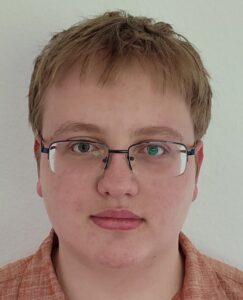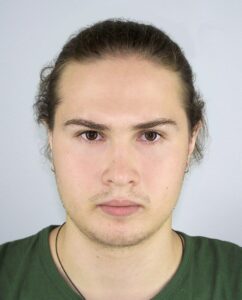On October 22, 2025, the first meeting of the Physiology Club of the Department of Physiology and Pathophysiology with the Course of Medical Biology took place. This is a new student scientific association that began its work within the framework of the Student Scientific Society in the new academic year.
The head of the Physiology Club is Zoya Levchenko. This year, more than 30 students of the 1st–5th years of the Medicine and Dentistry programs expressed their desire to actively participate and deliver reports based on their own research.
The topic of the first meeting of the Physiology Club was “Modern Electrophysiology: From the First Discoveries to Contemporary Methods.”
Third-year student Viktoriia Hannina, in her presentation “Modern Electrophysiology: From the First Discoveries to Contemporary Methods,” introduced the audience to the history of the emergence of electrophysiology, its development, its current state, and the scientific contributions of world-renowned researchers to this field. The presentation also covered modern electrophysiological methods, including:
Molecular level: ion channels
Cellular level: cell activity
Tissue level: conductivity, wave processes
Organ/system level: ECG, EEG, intracardiac studies
Second-year student Liubomyr Berh gave a presentation “Outstanding Medical Scientists of the Sumy Region. The Founder of Electrophysiology — Vasyl Yuriyovych Chahovets.” He described the life and scientific path of the prominent Ukrainian physiologist and academician, founder of modern electrophysiology. In addition to his scientific work, Chahovets was an excellent teacher who mentored a generation of talented students — V. V. Pravdych-Neminsky, A. I. Vyenchikov, M. K. Witte, M. V. Leinika, and others — who continued his legacy.
Third-year student Yehor Pelekh impressed the audience with the scientific depth of his report “Modern Methods of Electrophysiology.” The most popular electrophysiological methods include electrocardiography (ECG), electroencephalography (EEG), and electromyography (EMG). There are also invasive analogs of these methods (for example, for EEG — electrocorticography, for ECG — intracardiac electrograms, etc.). Among modern theoretical approaches, the patch clamp technique (a method for locally measuring cell membrane potential) has already become a classic tool in theoretical electrophysiology.
Fifth-year students Iryna Makei and Sonia Korcheva presented the topic “Biomedical Electronic Systems.” These are electronic devices and complexes designed for measuring, processing, transmitting, or interacting with human biological processes. Today, biomedical electronic systems are a powerful tool of modern medicine — requiring precision, safety, comfort, and autonomy. The future belongs to flexible, soft, and energy-efficient systems.
We invite everyone interested in physiology as a science to join our Physiology Club! We look forward to seeing you!








